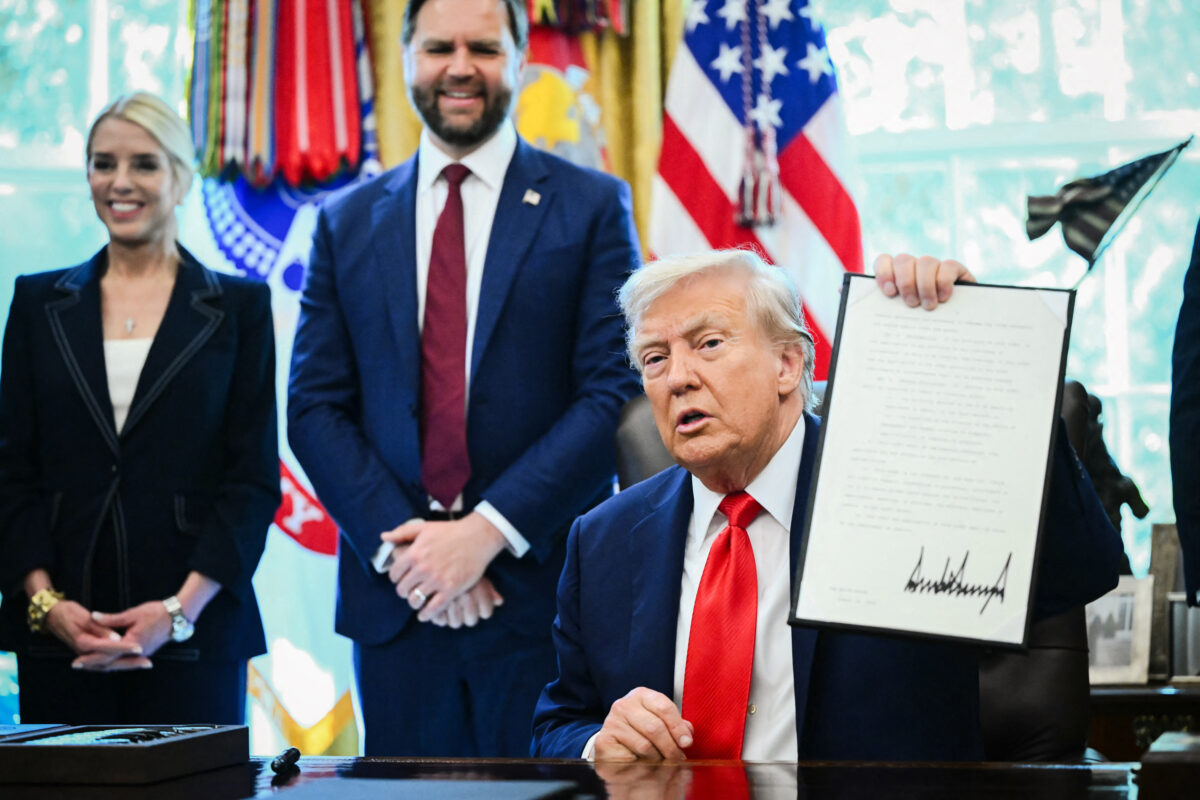By Stacy Robinson
President Donald Trump wants to end the cashless bail system across the United States as part of his push to lower crime.
To that end, he signed two executive orders on Aug. 25, one targeting the District of Columbia and the other addressing the states.
Here are a few things to know about those orders and the system Trump seeks to overturn.
What Is Cashless Bail?
When a suspect is arrested, a judge often releases him or her to await trial and may require bail—a sum of money—to be held as a bond to ensure that the suspect shows up for trial.
Cashless bail, sometimes called “bail reform,” allows suspects to be released without posting bail for some crimes, usually misdemeanors or nonviolent felonies.
Illinois is the only state in America that has completely eliminated cash bail, while other states, including New York, California, and New Mexico—as well as the District of Columbia—have restricted its use.
The states’ laws are not all the same.
Laws in the District of Columbia generally direct suspects to be released without bail, although there are exceptions for murder and armed assault with intent to kill.
New York’s bail reform system used to have such requirements, but in 2023, New York Gov. Kathy Hochul removed a provision that stated that judges must use the “least restrictive means” to ensure defendants show up for their trial.
What Do Trump’s Orders Do?
One of Trump’s executive orders gives Attorney General Pam Bondi 30 days to compile a list of state and local jurisdictions that use cashless bail policies for suspects who are alleged to have committed “offenses involving violent, sexual, or indecent acts, or burglary, looting, or vandalism.”
The jurisdictions that continue to use cashless bail will be stripped of federal funding, the order states.
Trump’s executive order targeting the District of Columbia asks Bondi to “press the District of Columbia to change its policies with respect to cashless bail” and suggests that the administration may withhold funding or federal services if the policies remain in place.

The District of Columbia order also states that, whenever possible, suspects should face federal charges and be “held in federal custody to the fullest extent permissible under applicable law.”
This provision ensures that “criminal defendants who pose a threat to public safety are not released from custody prior to trial,” the order states.
The threat of federal charges also means that defendants, if convicted, may face harsher penalties for the same crime than if they were charged under local law.
Federal offenses, especially those that are drug-related, often carry a minimum prison sentence.

What Do Proponents Say?
Proponents of cashless bail say it addresses the problem of wealth inequality in the system.
Wealthy people can easily post bail while awaiting trial, while impoverished suspects have to sit in prison, they say.
Allowing nonviolent suspects to wait for trial at home eases prison overcrowding, according to supporters.
Advocates for cashless bail also say even short-term prison time can have devastating effects, such as job loss or physical and psychological harm.
The Brennan Center for Justice, which advocates for bail reform, alleges that those subjected to lengthy prison stays while awaiting trial may be at risk of suicide.
The group also alleges that there is a racial element to the bail system and that black and Latino suspects may receive higher bail requirements than white suspects, even for the same crimes.
What Do Critics Say?
Cashless bail critics sometimes refer to the practice as “catch and release” and argue that it puts criminals back on the street to reoffend.
When announcing the executive orders, the White House released a statement documenting numerous instances of criminals who were released without bail, only to reoffend—sometimes immediately.

In one example, a man arrested for domestic violence against his ex-girlfriend murdered her less than 24 hours after being released without bail.
Some favor allowing suspects to go free for low-level crimes, such as possession of small amounts of marijuana, but say the reforms don’t allow judges enough discretion on whether or not to grant bail.
New York City Mayor Eric Adams supports some aspects of the policy but said in a 2022 press conference that allowing criminals to repeatedly offend is “insane.”
“It is dangerous, it is harmful, and it’s destroying the fabric of our city,” he said.

Inmates exercise in the maximum security yard of the Lansing Correctional Facility in Lansing, Kan., on April 18, 2023. John Moore/Getty Images
Does Cashless Bail Impact Crime?
There is disagreement about cashless bail’s effect on crime rates and repeat offenses, with opponents and supporters citing competing studies that seem to indicate contradictory outcomes.
In 2022, dozens of village mayors in Nassau County—which covers part of Long Island and borders New York City—blamed cashless bail for a regional spike in crime.
“Vote to elect the Democrat, Republican, or independent who will pledge to fully repeal bail reform,” Upper Brookville Village Mayor Elliot Conway said during a press conference addressing the crime spree.
That same year, a report by the Nassau County Police Department showed an increase in the number of criminals who were released without bail and rearrested.
This included a 64 percent increase in those arrested for assault and a 47 percent increase in those accused of burglary.
Cashless bail advocates said crime had increased across the nation and that the spike had nothing to do with bail reform.
Another study, in Yolo County, California, tracked suspects released on cashless “emergency bail” beginning in April 2020, during the COVID-19 pandemic, until the end of May 2021.
These suspects were released without bail to prevent the spread of the disease and to reduce prison overcrowding.
In that study, 595 suspects were released, and 420 of them—slightly more than 70 percent—were later rearrested on new charges.
Alternatively, a study by the Brennan Center for Justice examined crime rates from 2015 to 2021 and found “no statistically significant” increase in cities that adopted cashless bail policies.





